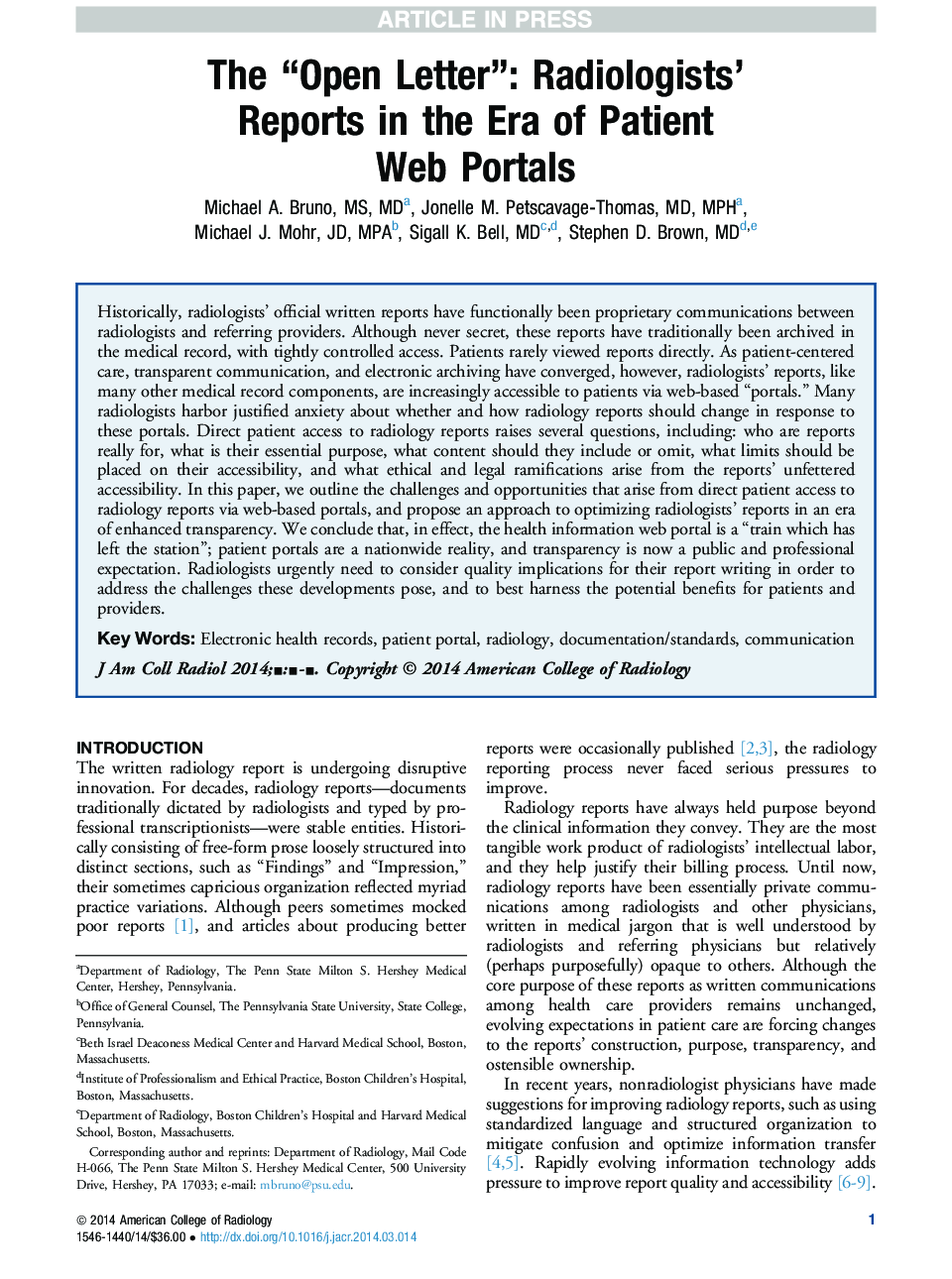| Article ID | Journal | Published Year | Pages | File Type |
|---|---|---|---|---|
| 4229953 | Journal of the American College of Radiology | 2014 | 5 Pages |
Abstract
Historically, radiologists' official written reports have functionally been proprietary communications between radiologists and referring providers. Although never secret, these reports have traditionally been archived in the medical record, with tightly controlled access. Patients rarely viewed reports directly. As patient-centered care, transparent communication, and electronic archiving have converged, however, radiologists' reports, like many other medical record components, are increasingly accessible to patients via web-based “portals.” Many radiologists harbor justified anxiety about whether and how radiology reports should change in response to these portals. Direct patient access to radiology reports raises several questions, including: who are reports really for, what is their essential purpose, what content should they include or omit, what limits should be placed on their accessibility, and what ethical and legal ramifications arise from the reports' unfettered accessibility. In this paper, we outline the challenges and opportunities that arise from direct patient access to radiology reports via web-based portals, and propose an approach to optimizing radiologists' reports in an era of enhanced transparency. We conclude that, in effect, the health information web portal is a “train which has left the station”; patient portals are a nationwide reality, and transparency is now a public and professional expectation. Radiologists urgently need to consider quality implications for their report writing in order to address the challenges these developments pose, and to best harness the potential benefits for patients and providers.
Related Topics
Health Sciences
Medicine and Dentistry
Radiology and Imaging
Authors
Michael A. MS, MD, Jonelle M. MD, MPH, Michael J. JD, MPA, Sigall K. MD, Stephen D. MD,
